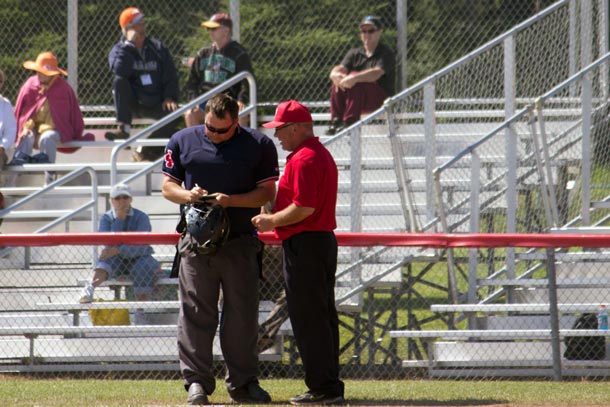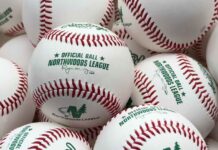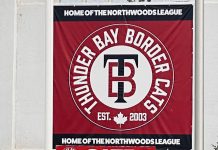
THUNDER BAY – SPORTS – I have umpired at nearly all different levels of ball, from slow-pitch to fastball to all levels of Little League Baseball and beyond and it seems one rule above all others tends to confuse players, coaches, and spectators alike. That rule is the rule that governs overthrows; lets take a look at it.
You can find the rule under the rules that govern the runner, rule 7.05 (g) “Each runner, including the batter-runner may, without liability to be put out, advance two bases when, with no spectators on the field, a thrown ball goes…[out of play]. The ball is dead. When such wild throw is the first play by an infielder, the umpire, when awarding such bases, shall be governed by the position of the runners at the time that the ball is pitched; in all other cases the umpire shall be governed by the position of the runners at the time of the throw.”
So, lets say there are runners on first and second (R1 & R2). The batter hits a groundball to the infield, the infielder fields the ball, bobbles it, and looks at second base but sees no play there. They throw to first base to try to retire the batter-runner and the throw glances off of the first baseman’s glove and goes over the fence.
Since this was the first play by an infielder, each runner advances two bases from the time of the pitch, which means, R2 scores. R1 goes to third base and the batter-runner is awarded second base.
Lets take the same play and change it a little. The batter hits a ground ball but this time it gets by the infielder. A hard charging outfielder fields the ball and, seeing the batter-runner making a wide turn around 1st, throws behind the runner, to try to catch them by surprise. However, the throw goes off of the 1st baseman’s glove and goes over the fence. At the time of the throw, the R2 had rounded 3rd base, R1 had rounded 2nd, and the batter-runner had rounded 1st.
Even though it was the first play, it was an outfielder that made the play so each runner advances two bases from the time of the throw. This means, R2 scores, R1 scores and the batter-runner goes to third base.
The only exception to the two base award is in the game that permits lead-offs. You would never see it in slow-pitch, lob and mat, or fastball but it does occur in baseball. The rule states that: if the pitcher, while in contact with the pitcher’s plate, throws the ball out of play, the award is one base. This particular part of the rule really makes a difference for pitchers in a baseball game. If a pitcher throws to first base in a pick-off attempt, and the ball goes out of play, the runner only gets one base, but if the pitcher steps back off of the pitchers plate, he is no longer considered a pitcher, he is now considered an infielder and if he throws the ball out of play now, it reverts to the two base award. Pretty interesting for umpires, pitchers, and players in baseball but you would never see this in slow-pitch, lob and mat, or fastball.
One more thing I would like to mention is, when someone goes to argue or question the award of bases on an overthrow, they should use the terminology found in the rulebook. Tell the umpire, “Hey! That’s two bases from the time of the throw!” or “That’s two bases from the time of the pitch!” Never say, “He gets the base he was going to plus one.”
Every time that I have heard a coach or a player use that terminology, I knew they didn’t actually know what the rule states, they only really knew the results they expected.
Two bases, guys, overthrows are two base awards.
If you think you might have an interest in learning some of the basics of umpiring, at no cost to you, come out to Lakehead University’s LU Hangar on Sunday mornings, from 10:30 am to noon. Sessions cover basic positioning, signal mechanics, and basic responsibilities in the two-umpire system through live drills with ballplayers and instructors.
Ken Story




